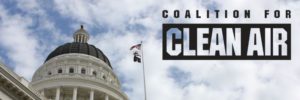This is part two of our overview of the extension of California’s cap and trade program. Part one can be found here.
Napkins, rushed legislation and backroom deals, oh my!
We’ve all heard the clichés and stories about the failings of the political system – the bill that was written on the back of a cocktail napkin; the enormous proposal that was jammed through before anyone could read it; trading votes in shady, backroom deals.
While some of these stories are more valid than others (the so-called napkin bill was only outlined on a napkin), no one would argue these are signs of a healthy political system. However, perhaps no legislative malady is more maddening than gridlock.
Unfortunately, there is a proposal going before California voters that could create major gridlock for California’s climate investments.
ACA 1: A recipe for gridlock
Assembly Constitutional Amendment 1, or ACA 1, by Assemblymember Chad Mayes would change California’s Constitution to require the 2024 allocations of cap and trade funds to be approved by two-thirds votes of both the Assembly and Senate. Until that two-thirds vote occurs, money from California’s auctions of emission allowances would be dumped into a new fund and remain unallocated, starving our most vulnerable communities of vital climate investment dollars.
Naturally, you may be asking yourself why this is even up for consideration. ACA 1 is a result of the deal-making needed to get a supermajority of state legislators to vote for this past year’s cap-and-trade extension, AB 398.
In order to attract enough bipartisan support to ensure a two-thirds vote, Gov. Brown and legislative leaders made a number of compromises. ACA 1 is one of those compromises.
Supposedly, ACA 1’s two-thirds vote requirement in 2024 is to ensure that cap and trade allocations maintain support from the state Legislature. We agree that it makes sense for the program’s allocations to be reviewed, but the Legislature should do that every year through the budget process, and there’s no valid reason to set up an anti-democratic two-thirds hurdle.
ACA 1 is a solution in search of a problem (and could cause other real problems)
Forty percent of cap-and-trade proceeds are allocated annually through the state’s budget process (the other 60% is automatically allocated by existing state law).
The budget process spans months and involves multiple public hearings, opportunities for public comment and ultimately requires approval of both houses of the Legislature and the governor.
Additionally, state agencies are required to actively seek community participation and involvement, giving the public a hand in how climate investments and other programs are implemented on the ground.
If ACA 1 were serious about oversight, it would push for more community participation and engagement between state agencies and citizens. However, requiring a two-thirds vote in 2024 just establishes a legislative road block rather than enhancing public participation.
Though ACA 1 is a recipe for gridlock, more concerning are the potential effects of that gridlock. Over the past few years, California’s climate policies have evolved to help disadvantaged and low-income communities adapt to climate change and decades of environmental injustice.
These climate investments help fund truly transformational projects, improving the mobility, air quality, health and quality of life in our most vulnerable communities. Delaying allocations to these communities could result in the cancellation or scaling down of these worthwhile, transformational projects.
Additionally, we have seen far too many times that wrangling over large sums of money begets backroom deals and unsavory compromises. In the quest to get a two-thirds vote, climate investment money could be diverted away from the communities that truly need help and into the pockets of special interests, namely polluters who are looking for money to comply with environmental law (so they don’t have to pay).
Past is prologue
This isn’t just speculation or whataboutism.
A two-thirds vote gives polluters more leverage in how cap-and-trade funding is spent after 2024. The fact is, ACA 1 itself was a part of a deal to get a two-thirds vote for the cap-and-trade extension. When a two-thirds vote was required to approve California’s budget, legislative hostage-taking, gimmicks and pork barrel spending were part and parcel of the process.
This political brinksmanship resulted in unbalanced and unstable budgets that were several months overdue, significantly damaged California’s fiscal health and credit-worthiness and had enormous impacts on all Californians.
It has taken years and many hard choices for California to recover from dysfunction that plagued our state’s budget. Sowing the seeds for this type of dysfunction in the state constitution not only threatens the success of California’s climate policy, but also endangers the health and well-being of our low-income and disadvantaged communities.
There is no room for this sort of politicking when lives are on the line. The Coalition for Clean Air opposes ACA 1, and urges all Californians to oppose this measure on the June 2018 ballot.
[share title=”Share This Post”]
Originally published in Capitol Journal on December 7, 2017: http://capitolweekly.net/aca1-gridlock-ballot-june/








